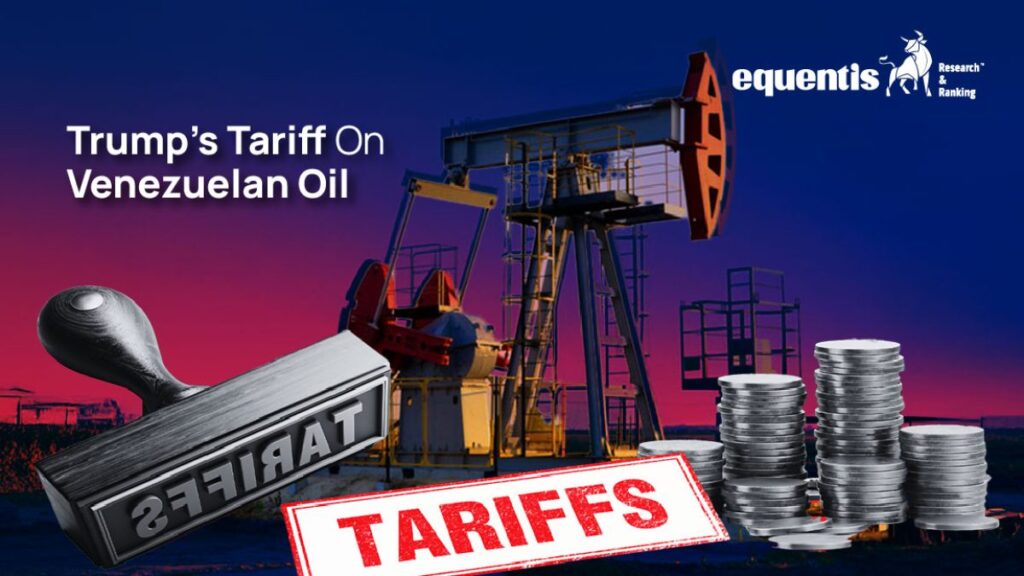NEW DELHI: Indian refiners are now stuck with a problem after the US imposed 25% tariffs on countries buying crude oil from Venezuela, forcing them to look for alternative oil sources. While oil imports from the south American country to India have not been conventionally high, these shipments increased last year after the US eased earlier sanctions imposed on the country.
Indian refiners are now likely to diversify their sources which may not come at a competitive price given Venezuelan oil was available at a discount than Brent, industry players say. Analysts, however, maintain that toning down of Venezuelan oil may not result in a major rejig of the oil trade flows as the quantum imported from Venezuela is limited.
“The impact is not likely to be huge as this (Venezuelan) crude was contributing to a small percentage of total imports. Indian refiners can buy from alternative sources but Venezuelan crude was available at a discount,” said Prashant Vashisht, Senior Vice President & Co-Group Head, Corporate Ratings, ICRA Limited.
Pulkit Agarwal, Head of India Content (cross commodities) S&P Global Commodity Insights noted that Venezuela offers a different quality of heavy crude oil, which while difficult to process, is brought for competitive economic reasons. “While a straight replacement in terms of technical quality match is difficult, Indian refiners in the past have been nimble in changing their crude purchase mix,” he said.
The US on Monday imposed a 25% secondary tariff on countries including India and China importing crude oil from Venezuela starting April 2 in addition to any existing levies. As per the executive order published under the governance of US President Donald Trump, the tariffs, once applied, would remain in place for one year “after the last date on which the country imported Venezuelan oil,” unless the US commerce secretary approved their earlier removal, as per a Financial Times report.
Owing to imposition of additional tariffs by the US, many Indian refiners including Reliance Industries have halted its oil shipments from Venezuela.
Prior to the tariff, Venezuelan crude offered discounts of $8–10 per barrel relative to Brent — a substantial margin that attracted price-sensitive refiners, as per industry players. In contrast, Russian crude was discounted by only $2–3 per barrel, and US crude was trading closer to Brent benchmark levels.
“With a 25% surcharge, Venezuelan oil becomes more expensive than both Russian and US grades — even before accounting for logistical and insurance costs associated with sanctioned cargoes. This shift effectively removes Venezuelan oil from India’s procurement consideration, barring significant changes in US policy or a fresh diplomatic arrangement,” said Simarjeet Singh, Assistant Professor, Finance & Accounting at Great Lakes Institute of Management.
India imported 1.7 million tonnes in FY24 and 1.9 million tonnes per annum during April 2024-Jan 2025 period from Venezuela, as per data provided by Icra. In terms of share of imports, oil imports from Venezuela accounted for 0.7% of the total imports in FY24 which increased to 1% in FY25 till January.
As far as Indian refiners are concerned, they might have to turn back to Russian crude for the time being which is a bit expensive compared to the Venezuelan flagship grade Merey, as per analysts. While the US has imposed sanctions on various Russian vessels too, the industry expects a rebound in the shipments from Russia March onwards. Russian discounts have also narrowed lately owing to the latest US sanctions.
The reason for Venezuelan crude coming at a cheaper rate comes from the fact that it is much heavier and is more sulphurous, making it more viscous. Indian refiners have so far been successful in breaking it down into high-value transportation fuels which is also a reason for India being a traditional buyer of Venezuelan oil.
Additionally, while the country’s oil imports seem fairly at a comfortable position, the oil producing majors might have to face the brunt of newly imposed sanctions, shattering their hopes to take crude cargoes in order to liquidate their pending dividends in the country.
Beyond trade flows, the US tariff also clouds the outlook for Indian investments in Venezuela’s upstream sector, particularly those of ONGC Videsh Limited (OVL).
“OVL has been struggling to repatriate dividends from its Venezuelan ventures for several years. The new tariff, by further straining Caracas’ oil revenues, risks deepening Venezuela’s fiscal crisis and weakening the ability of joint ventures to generate distributable profits,” Singh said, adding that unless alternative mechanisms are found — potentially through rupee-based settlements or third-country intermediaries — the prospects of recovering income from Venezuela remain bleak.
India had resumed crude oil purchases from Venezuela in December 2023 after the US eased sanctions on the latter. Even as the US has restored those sanctions after a few months, Venezuela, through specific sanction exemptions, has been supplying crude oil to some countries including India.
India used to import approximately 300,000 barrels per day crude from Venezuela during 2017 to 2019, prior to US sanctions because of the discounted pricing offered by the Venezuelan producers, S&P Global has earlier said.
Reliance Industries, a primary importer of Venezuelan crude, has already confirmed a suspension of further shipments in light of the tariff, as per news reports. Other state-run refiners, which had maintained minimal exposure to Venezuela post-2019, are also expected to abstain, as per analysts.
Following the development, global crude oil prices hovered around $73 per barrel on Thursday.
India is the third largest consumer of crude oil in the works and imports as much as 85% of its oil requirements. The country’s oil minister Hardeep Singh Puri earlier on multiple occasions has maintained that India will always buy crude oil from Venezuela as long as it is permitted to and Venezuela is not under sanctions.
Source: The Financial Express

 RBI To Double Foreign Investor Cap In Listed Firms To 10% To Boost Inflows
RBI To Double Foreign Investor Cap In Listed Firms To 10% To Boost Inflows 